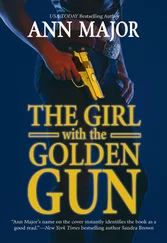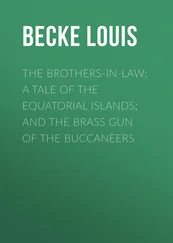On January 16, 1919, the Treasury Department became far more deeply involved in law enforcement when Nebraska cast the last vote necessary to ratify the Eighteenth Amendment to the Constitution, banning the manufacture, sale, and transport of alcoholic beverages. The national Prohibition Act, also known as the Volstead Act for Minnesota congressman Andrew J. Volstead, placed responsibility for enforcing the amendment with the commissioner of Internal Revenue because of the department’s prior role as collector of alcohol taxes and enforcer of violations of the alcohol tax laws.
The amendment may have crimped the supply of booze, but it did nothing to diminish America’s thirst. Underworld entrepreneurs throughout the country sought to satisfy demand by building illegal distilleries and saloons. The amendment guaranteed them a large clientele: while it outlawed the production and distribution of booze, it allowed consumers to own, drink, and even buy alcoholic beverages without penalty. Gangs fought each other for control of the underground distilleries and distribution networks and paid a substantial portion of their profits to local officials and police to help protect their interests.
What ATF neglects to tell in its fact sheets and its biographic handout on Eliot Ness is that agents of Treasury’s Prohibition Unit were themselves notoriously corrupt. They received abysmally low salaries, which Robert J. Schoenberg, author of the 1992 biography Mr. Capone , called an “invitation to corruption.” The agents’ behavior heartened the leaders of Chicago’s Prohibition gangs, who found they exhibited, as Schoenberg puts it, “an almost Chicagoan capacity for corruption.”
Eliot Ness urged his supervisors to let him establish a special unit of young agents not yet “bent” by mob money and influence, and in September of 1929 he founded a squad the newspapers would soon begin calling The Untouchables, for their apparent resistance to corruption. Far from shooting it out with bootleggers and walking up mean streets cradling a tommy gun, Ness and his squad used painstaking investigative techniques to pursue the Chicago gangsters, chief among them Alphonse Capone, also known as Scarface. One of their coups was to place a wiretap in a nightclub operated by Al Capone’s brother Raffalo, more commonly known as Ralph.
Like the Wild West heroes who came before him, Ness was largely responsible for his own legend. In a 1957 book called The Untouchables , which became the basis for the TV series starring Robert Stack, Ness played up the dangers of pursuing Al Capone, even though in fact Capone and other gangsters had an overwhelming respect for the damage they would do to their own interests if they ever killed a federal agent. Indeed, Schoenberg writes, Capone explicitly warned his men not to shoot it out with Treasury agents—just to get away, if possible.
The real hero in the pursuit of Al Capone, according to Schoenberg, was an “investigative accountant” named Frank Wilson, an Internal Revenue agent who would later become head of the U.S. Secret Service, another branch of the Treasury Department. Wilson and colleagues doggedly hunted for evidence that Al Capone had failed to pay his income tax. The first step was to prove he even had an income, something Capone had consistently and effectively denied ever receiving. The agents examined some one million checks looking for any hint of money destined for Capone. A breakthrough came when Wilson discovered a ledger confiscated early on in a raid on Capone’s headquarters that had been left to gather dust at the back of a file cabinet at his office.
Prohibition greatly heightened America’s official distaste for guns. Gangsters rubbed each other out on street corners, in front of restaurants, from armored limousines. By the fall of 1925, as mobs in Chicago fought each other for control, the homicide rate in Cook County, Illinois, rose to more than one murder per day, a decidedly modern rate of mutual disposal. For as long as the killing remained in the family, the public was enthralled. Chicago’s gangsters were glamorous celebrities thumbing their noses at a censorious government intent on denying the public its pleasures.
The history of gun violence, however, teaches two important maxims, whose predictive power was demonstrated yet again during the Prohibition wars.
First, violence will always spread beyond boundaries initially found by the public at large to be “acceptable.” That is, gang warfare—or, as today, inner-city feuds between drug dealers—will inevitably expand beyond those boundaries to include bystanders.
Second, guns will always migrate from the hands of their originally intended users to those who value their use in crime. Just as the Ingram, designed for military use, became instead the drug-gang weapon of choice and a ghetto icon, so too the Thompson submachine gun, designed to be a “trench broom” for use in World War I, became instead the favored tool of gangsters throughout the country and an icon of the 1920s. In 1969, long before S.W. Daniel began peddling its Cobray as “the gun that made the eighties roar,” William J. Helmer titled his biography of the Thompson gun The Gun That Made the Twenties Roar . The gangsters’ use of the gun was largely responsible for the passage of the nation’s first-ever federal gun controls in 1934, and thus for expanding the Treasury Department’s law-enforcement responsibilities to include firearms.
The Thompson submachine gun, invented by Gen. John T. Thompson, was built in New York by Auto-Ordnance Corp., founded by Thompson in 1916 with the express purpose of putting the design into production. Like the Ingram, the Thompson submachine gun was initially a failure. The Army did not yet appreciate its value. The gun was too big to be a sidearm, too small for a field rifle, or so went the conventional wisdom of the time. General Thompson, like Gordon Ingram, sought to expand the market for the gun by offering it to consumers, an effort that resulted in some unusual advertising. In a 1922 magazine ad, Auto-Ordnance merged frontier myth with modern firepower, depicting a cowboy in furry chaps and kerchief earnestly firing his tommy gun from the front porch of his ranch house at a group of seven bandits. The text below called the gun “the ideal weapon for the protection of large estates, ranches, plantations, etc.” An article in Army & Navy Journal reported the gun “can be kept in the home as a protection against burglars.”
Critics, however, described the gun in terms strikingly similar to those used by Col. Leonard Supenski in his critique of S.W. Daniel’s Cobray pistol. In 1923, a British firearms expert described the tommy gun as “an arm that is useless for sport, cumbrous for self-defense, and could not serve any honest purpose, but which in the hands of political fanatics might provoke disaster.”
The gun did not initially win many military contracts, but it captured the imagination of the Chicago gangs. The first recorded use of a tommy gun in crime occurred in Chicago on September 25, 1925, when Frank McErlane, a Chicago bootlegger, set out to assassinate a competitor named Spike O’Donnell. Police were stymied by the volume and the orderly arrangement of bullet holes left in a storefront by the attack. McErlane used the gun again just over a week later when he blasted the headquarters of another bootlegger. Here too no one was killed. A few months later, on February 9, 1926, McErlane used the gun again; this time the weapon made front-page headlines. The banner headline in the next morning’s Chicago Tribune read, “Machine Gun Gang Shoots 2.”
That day, Al Capone went to a Chicago hardware store and ordered three.
Capone first used his tommy guns on April 27, 1926, in an attack that would soon become a staple of the gangster-film genre. He and associates set out to kill a bootlegger named James Doherty. Lumbering along in a black, armored Cadillac limousine, Capone caught up with Doherty as he and two other men stepped from a Lincoln and made their way toward one of the many illegal saloons then operating in Chicago. Capone and his gunmen opened fire, killing all three men. They didn’t realize it until later, but they had killed an unintended victim. It was a mistake that would, five years later, prove an important contributor to Capone’s conviction for tax evasion.
Читать дальше
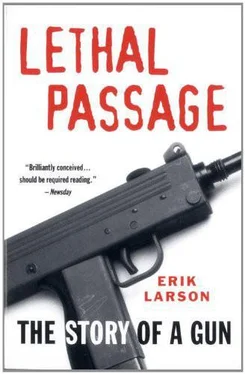
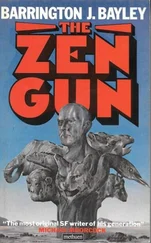


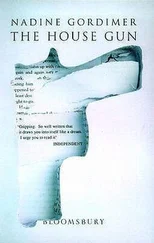

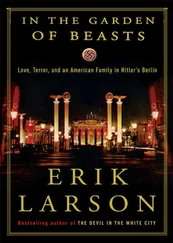

![Ричард Деминг - Whistle Past the Graveyard [= Give the Girl a Gun]](/books/412176/richard-deming-whistle-past-the-graveyard-give-t-thumb.webp)
